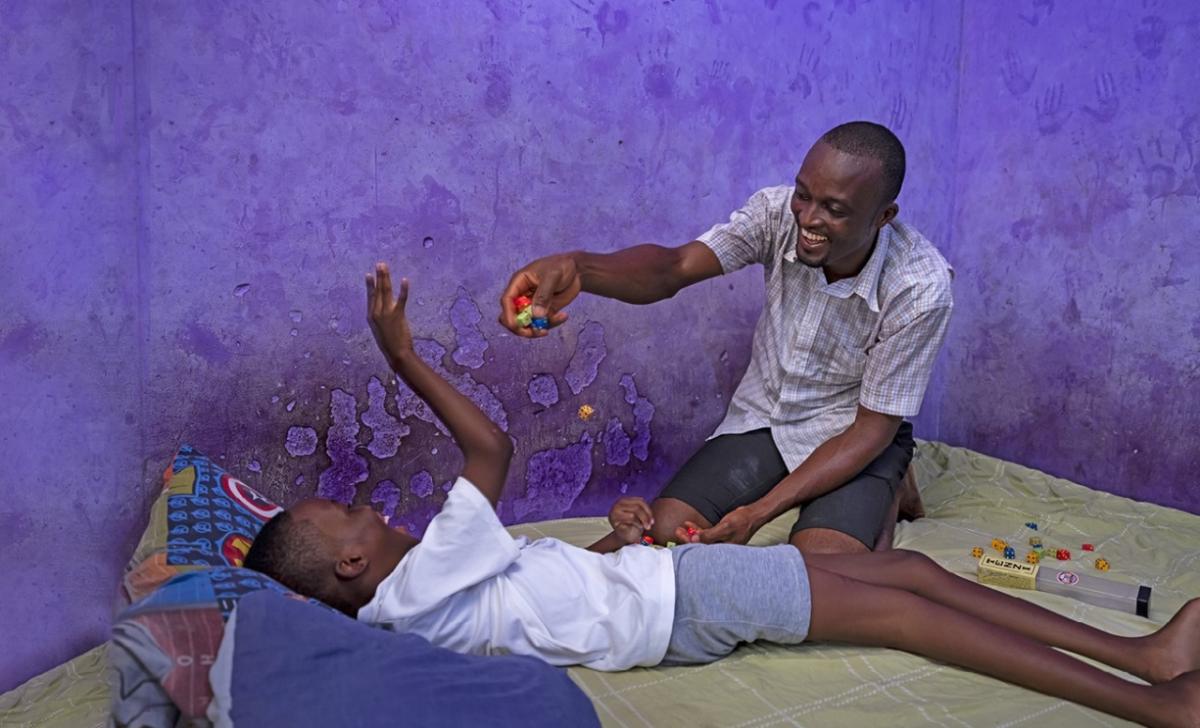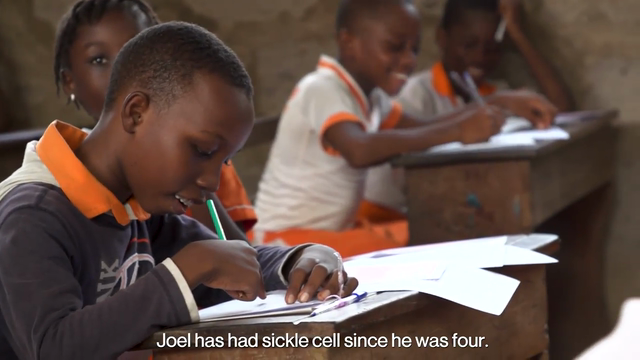Novartis Expands Africa Sickle Cell Disease Program to Uganda and Tanzania
BASEL, Switzerland, June 18, 2020 /3BL Media/ – Today, Novartis and its partners announced the expansion of the Africa Sickle Cell Disease program to East Africa with the signature of two new memoranda of understanding with the Ministries of Health of Uganda and Tanzania. The program, first launched in Ghana in November 2019, aims to improve and extend the lives of people with sickle cell disease (SCD) in sub-Saharan Africa, with plans to reach a total of 10 countries by 2022.
“In this time of worldwide uncertainty, it is even more important to support people living with chronic conditions like sickle cell disease,” said Dr. Patrice Matchaba, Group Head of Global Health & Corporate Responsibility at Novartis. “We are excited to join forces with the Ministries of Health of Uganda and Tanzania and local partners to reimagine treatment and care for people with sickle cell disease.”
Within the scope of these public-private partnerships, Novartis and its partners have agreed to explore collaboration opportunities aimed at tackling the growing burden of SCD in their countries. The partners intend to develop and implement a comprehensive approach that
includes making diagnosis and treatment available, accessible and affordable for patients and their families; promoting scientific research, training and education; and pursuing robust monitoring and evaluation of the program. As a next step, Novartis plans to work with the respective Ministries of Health to further define the scope of each collaboration and explore opportunities for additional partnerships.
In Ghana, the program is already making progress with more than 2000 patients being treated with hydroxyurea in 11 treatment centers across the country. To date, Novartis has delivered more than 60 000 treatments of hydroxyurea in Ghana, helping ensure SCD patients have uninterrupted access to treatment during the global pandemic. At the same time, Novartis has registered the medicine for the treatment of SCD in Uganda, Tanzania and Kenya. Hydroxyurea is a commonly used medicine for patients with SCD in developed countries, and is approved for use in both adults and children. A recent study, published in the New England Journal of Medicine2, indicates that hydroxyurea is effective and safe in children with SCD in sub-Saharan Africa and reduces the incidence of pain events (vaso-occlusive crises), malaria, blood transfusions, and death.
In addition, Novartis has signed a memorandum of understanding with the University of Ghana with the intent to collaborate on promoting education, research, advocacy and capacity building to advance Ghana’s national health agenda to improve the health and well-being of people with SCD. At the same time, we are continuing our efforts to develop a child-friendly formulation of hydroxyurea and have announced plans to conduct two clinical trials in Ghana and Kenya for its next-generation treatment for SCD, crizanlizumab. Crizanlizumab, a novel targeted biologic therapy, is approved in a number of countries to reduce the number of pain crises in people with SCD. The trials are expected to start in 2020; this will be the first time that a biologic therapy, which is not a vaccine, enters multicenter clinical trials in sub-Saharan Africa (excluding South Africa).3
“As we fight the COVID-19 pandemic in Africa, we cannot lose sight of other health priorities for the region, including sickle cell disease,” said Dr. Charles Kiyaga, Sickle Cell Program Head at the Ministry of Health in Uganda. “Such partnerships between the public and private sector are necessary to help accelerate progress in SCD prevention and management for the benefit of the patients, their families and communities.”
Sickle cell disease is recognized by the World Health Organization as a public health priority and a neglected health problem in sub-Saharan Africa, which carries approximately 80% of the global disease burden.4 In countries in West, Central and East Africa, the prevalence of the sickle cell gene is between 10 to 30%, while in some areas it is as high as 45%.5 It is estimated that approximately 1 000 children in Africa are born with SCD every day and more than half die before they reach five years of age.1 This is due primarily to a lack of early diagnosis through newborn screening, penicillin prophylaxis, parental education, and comprehensive care. In resource-poor countries, more than 90% of children with SCD do not survive to adulthood.6
About Sickle Cell Disease
Sickle cell disease is a complex and debilitating, genetic blood disorder that goes beyond sickle-shaped red blood cells. The disease is associated with chronic inflammation, causing higher levels of cell adhesion proteins, which make both the blood vessels and certain blood cells stickier and prone to multicellular interactions, or clusters, in the bloodstream.7,8 This environment can lead to the acute episodes of pain known as sickle cell pain crises, or vaso-occlusive crises, as well as life-threatening complications.7,9 SCD is a lifelong illness that can put an emotional, physical, and financial burden on patients and their families.10,11
Disclaimer
This media update contains forward-looking statements within the meaning of the United States Private Securities Litigation Reform Act of 1995. Forward-looking statements can generally be identified by words such as “potential,” “can,” “will,” “plan,” “may,” “could,” “would,” “expect,” “anticipate,” “seek,” “look forward,” “believe,” “committed,” “investigational,” “pipeline,” “launch,” or similar terms, or by express or implied discussions regarding potential marketing approvals, new indications or labeling for the investigational or approved products described in this media update, or regarding potential future revenues from such products. You should not place undue reliance on these statements. Such forward-looking statements are based on our current beliefs and expectations regarding future events, and are subject to significant known and unknown risks and uncertainties. Should one or more of these risks or uncertainties materialize, or should underlying assumptions prove incorrect, actual results may vary materially from those set forth in the forward-looking statements. There can be no guarantee that the investigational or approved products described in this media update will be submitted or approved for sale or for any additional indications or labeling in any market, or at any particular time. Nor can there be any guarantee that such products will be commercially successful in the future. In particular, our expectations regarding such products could be affected by, among other things, the uncertainties inherent in research and development, including clinical trial results and additional analysis of existing clinical data; regulatory actions or delays or government regulation generally; global trends toward health care cost containment, including government, payor and general public pricing and reimbursement pressures and requirements for increased pricing transparency; our ability to obtain or maintain proprietary intellectual property protection; the particular prescribing preferences of physicians and patients; general political, economic and business conditions, including the effects of and efforts to mitigate pandemic diseases such as COVID-19; safety, quality, data integrity or manufacturing issues; potential or actual data security and data privacy breaches, or disruptions of our information technology systems, and other risks and factors referred to in Novartis AG’s current Form 20-F on file with the US Securities and Exchange Commission. Novartis is providing the information in this media update as of this date and does not undertake any obligation to update any forward-looking statements contained in this media update as a result of new information, future events or otherwise.
About Novartis
Novartis is reimagining medicine to improve and extend people’s lives. As a leading global medicines company, we use innovative science and digital technologies to create transformative treatments in areas of great medical need. In our quest to find new medicines, we consistently rank among the world’s top companies investing in research and development. Novartis products reach nearly 800 million people globally and we are finding innovative ways to expand access to our latest treatments. About 109,000 people of more than 145 nationalities work at Novartis around the world. Find out more at.
Novartis is on Twitter. Sign up to follow @Novartis at https://twitter.com/novartisnews
For Novartis multimedia content, please visit https://www.novartis.com/news/media-library
For questions about the site or required registration, please contact media.relations@novartis.com
References
- Scott D. Grosse, Isaac Odame, Hani K. Atrash, et al. Sickle Cell Disease in Africa: A Neglected Cause of Early Childhood Mortality. American Journal of Preventive Medicine 41, no. S4 (December 2011): S398-405.
- https://www.nejm.org/doi/full/10.1056/NEJMoa1813598
- https://www.clinicaltrials.gov
- Odame I. Perspective: We need a global solution. Nature. 2014 Nov;515(7526):S10
- https://www.afro.who.int/health-topics/sickle-cell-disease
- Bernadette Modell and Matthew Darlison. Global epidemiology of haemoglobin disorders and derived service indicators. Bulletin of the World Health Organization 86, no. 6 (June 2008): 480-487.
- Gutsaeva D, Parkerson J, Yerigenahally S, et. Inhibition of cell adhesion by anti–P-selectin aptamer: a new potential therapeutic agent for sickle cell disease. Blood. 2011;117(2):727-735.
- Sparkenbaugh E, Pawlinski R. Interplay between coagulation and vascular inflammation in sickle cell disease. J Haematol. 2013;162(1):1-22.
- Steinberg M. Management of sickle cell disease. N Engl J Med. 1999;340(13):1021-1030.
- Sanger M, Jordan L, Pruthi S, et al. Cognitive deficits are associated with unemployment in adults with sickle cell anemia. Journal of Clinical and Experimental Neuropsychology. 2016;38(6):661-671.
- Anim M, Osafo J, Yirdong F. Prevalence of psychological symptoms among adults with sickle cell disease in Korle-Bu Teaching Hospital, Ghana. BMC Psychology. 2016;4(53):1-9.
# # #
Novartis Media Relations
E-mail: media.relations@novartis.com
|
Antonio Ligi Novartis External Communications +41 61 324 1374 (direct)
|
Katerina Kontzalis Global Health & CR Communications +41 61 324 1631 (direct) +41 79 797 8393 (mobile) |
|
Eric Althoff Novartis US External Communications +1 646 438 4335 |
Novartis Investor Relations
Central investor relations line: +41 61 324 7944
E-mail: investor.relations@novartis.com
|
Central |
|
North America |
|
|
Samir Shah Pierre-Michel Bringer Thomas Hungerbuehler Isabella Zinck |
+41 61 324 7944 +41 61 324 1065 +41 61 324 8425 +41 61 324 7188 |
Sloan Simpson Cory Twining |
+1 862 778 5052 +1 862 778 3258 |



